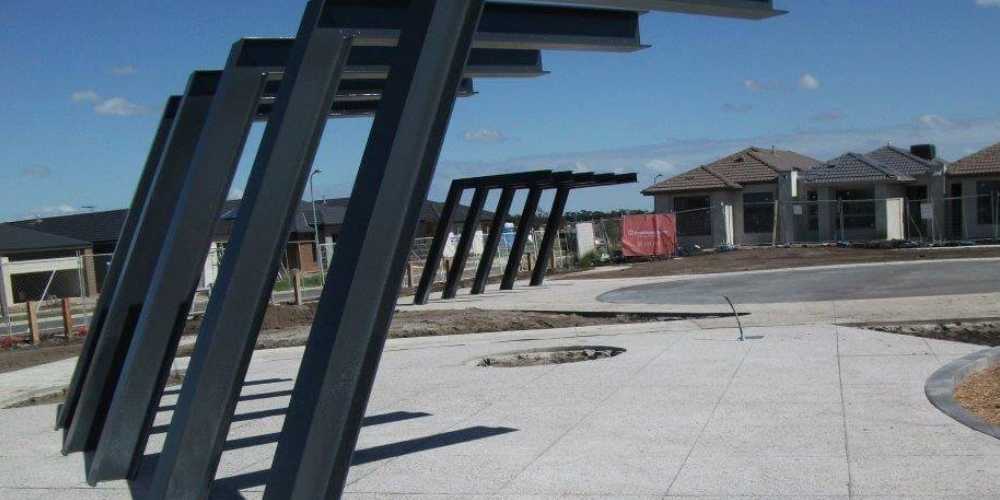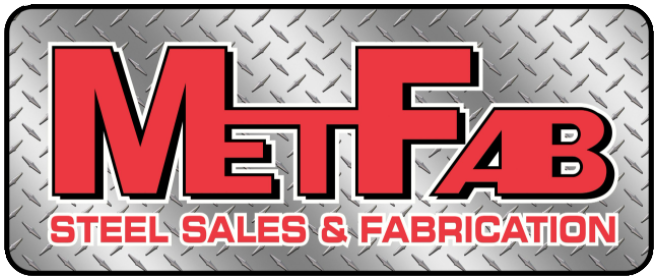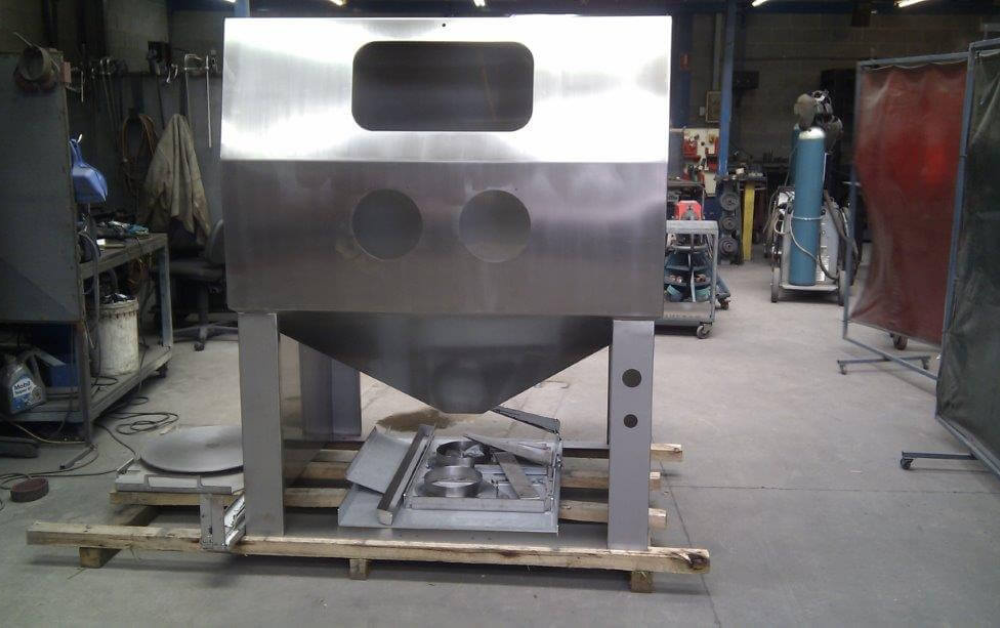Metal Fabrication vs Manufacturing - What's the difference?
We often hear the words "metal fabrication" and "manufacturing," they might seem the same, but they're not. Both processes create products from raw materials, but they're different in how they work and what they do. It's very important to understand these differences for anyone interested in metalworking.
So how exactly do they differ?
Let's find out!
What is Metal Fabrication?
Metal fabrication is constructing metal buildings, goods, or components from raw materials such as sheet metal, rods, or bars by cutting, shaping, and assembling them. Metal fabricators are skilled craftsmen who utilize various equipment and procedures to turn raw materials into the required finished product.
Metal fabrication involves cutting, forming, welding, machining, and assembly. Cutting tools like shears, saws, lasers, or plasma cutters are used to cut the raw material. Forming involves bending, rolling, or pressing the metal. Welding is used to fuse metal pieces. Machining processes are used for drilling holes, threading, or milling specific features. The final stage is assembly, where the fabricated metal components are combined to create the finished product.
Metal fabrication is essential in many industries, including construction, automotive, aerospace, and manufacturing. It enables producing a wide range of items, from simple metal brackets and frames to complicated equipment and buildings. Metal fabricators must be skilled to ensure the quality and precision of the finished products, making metal fabrication an important aspect of contemporary manufacturing processes.
What is Metal Manufacturing?
Manufacturing is an industrial process that turns raw materials into finished materials that can be sold to consumers. Usually, to do this, raw materials are combined with pieces made through manufacturing procedures. After that, the final item is packed and sent to clients or merchants for sale.
Metal manufacturing involves selecting and preparing raw materials, melting and casting them into basic shapes, forming them into intermediate components, machining and fabricating them to their final shape, joining and assembling them, applying surface treatments, conducting quality control and testing, and finally packaging and distributing the finished products.
The fabrication of metals is a crucial sector that involves many others, including the automotive, aircraft, building, electronics, and consumer products industries. Thanks to the metal manufacturing industry's efficiency and size, a wide range of essential items we need daily may be produced, substantially contributing to current industrial and technical progress.
Metal Fabrication vs Manufacturing: Their Differences
Metal fabrication and metal manufacturing are two distinct procedures in manufacturing metal items. While they have some parallels, their methodology, scale, and purpose differ vastly. Let us look at their differences:
Definition and Scope of Application
Metal Fabrication:
Metal fabrication is constructing metal structures, components, or products from raw materials such as sheet metal, rods, or bars by cutting, shaping, and assembling them. It is a more specialized and personalized technique in which individual items are produced to specific designs or specifications.
Metal Manufacturing:
On the other hand, metal manufacturing refers to mass manufacturing standardized metal objects or products utilizing diverse industrial processes. It entails large-scale production emphasizing efficiency and high volume to fulfill demand.
Production Scale
Metal Fabrication:
Smaller-scale projects or custom-made objects are often catered to by metal fabrication. It is ideal for making one-of-a-kind or limited-quantity metal components tailored to the demands of a certain project or customer.
Metal Manufacturing:
Metal manufacturing focuses on large-scale production to produce similar or standardized metal goods. The objective is to improve the efficiency and cost-effectiveness of production operations.
Flexibility and Customization
Metal Fabrication:
Because it includes making individual parts based on unique designs or client needs, metal fabrication provides greater flexibility and customization. It enables the realization of complicated and one-of-a-kind patterns.
Metal Manufacturing:
Metal production places a premium on standardization to achieve consistent product quality and cost-effectiveness. While certain differences are conceivable, the primary goal is to provide consistent items that fulfill market demand.
Involved Processes
Metal Fabrication:
Cutting, bending, welding, machining, and assembling are all common fabrication processes. Fabricators use various tools and techniques to shape and combine metal components to create the final product.
Metal Manufacturing:
Metal production entails a broader range of operations, such as melting, casting, shaping (rolling, forging, extrusion), machining, joining (welding, soldering), and surface finishing (painting, plating). These techniques are designed to maximize production efficiency on a broad scale.
Applications
Metal Fabrication:
Metal fabrication is frequently employed in projects that need unique or customized metal structures, such as architectural features, decorative decorations, mechanical parts, and specialist equipment.
Metal Manufacturing:
Metal production provides important standardized goods needed in everyday life to various sectors, including automotive, aircraft, construction, electronics, appliances, and infrastructure.

Why Is Knowing Their Differences Important?
Correct Process Selection
Knowing the differences lets you select the best manufacturing method for your unique project or product. Metal fabrication is the best option for specialized metal components with distinctive designs. Conversely, metal production is more suited if you need standardized items on a wide scale. Making the proper decision guarantees the best possible resource use and product quality.
Dimensional measurement
Understanding the variations enables you to evaluate the financial effects of each step. Due to its personalized nature, metal fabrication may have greater labor costs. In contrast, metal manufacturing can use economies of scale to lower production costs per unit. Choosing the least expensive option may increase your return on investment and market competitiveness.
Efficiency of Cost
Techniques for nondestructive testing (NDT) are essential for finding flaws or irregularities in metal manufacturing without causing damage to the finished goods. NDT methods, including radiography, magnetic particle testing, and ultrasonic testing, can find internal and surface flaws like fractures, voids, inclusions, and other flaws that could impair a product's performance. NDT procedures are crucial for guaranteeing that the goods are free of flaws or irregularities that can compromise their structural integrity and operation.
Capacity and Production Scale
Metal manufacturing is best at creating many uniform goods, whereas metal fabrication is best suited for smaller-scale tasks. Knowing this enables you to match your production capacity to market demand, reducing resource waste or overproduction.
Customized Products
If your clients demand customized metal goods, being aware of fabrication modification options enables you to cater to their requirements. The amount of personalization offered by metal production could be lower, affecting consumer satisfaction and competitive positioning.
Adaptation of Industry
Demands and criteria vary across different sectors. It's possible to align your production methods with the demands of a certain industry by being aware of the distinctions. Sectors like automotive and consumer products profit from the efficiency of metal production to satisfy high-volume needs, whereas sectors like aerospace, construction, and architectural design frequently rely on metal fabrication for custom solutions.
FREQUENTLY ASKED QUESTIONS
Conclusion
Understanding the distinctions between metal fabrication and metal manufacturing is crucial when deciding how to make metal products. It helps companies and people select the best strategy that suits their unique requirements, financial constraints, and clientele preferences.
Understanding these procedures enables you to obtain high-quality goods while conserving time, money, and resources, regardless of whether you need a lot of identical metal products or something that is specially built to order and one of a kind. Creating metal products more creatively and effectively benefits the environment and the economy. Therefore, by being aware of these aspects, you may improve your decisions and complete your metalworking tasks, advancing global progress and development.


